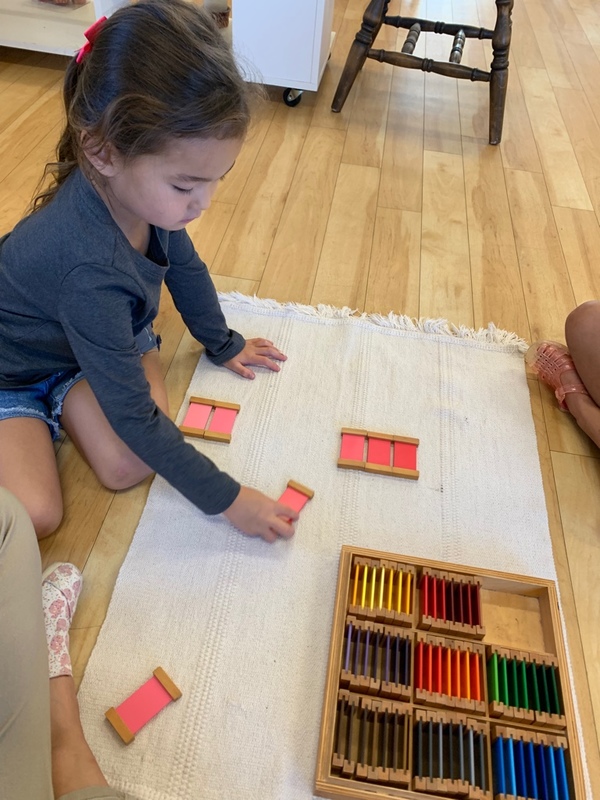(858) 759-0631
What are the lessons in our Bumblebee Montessori environment? Why do the children call them “work”? How are they given? How often are they given? And so forth. Let's briefly discuss these lessons that take place in our Primary classroom.
Many things separate the Montessori Environment from a traditional school setting. One of them is the materials in the classroom we refer to as lessons, which the children call “work”. Most of these lessons are specifically designed and some are common enough that you can find them in your own home. These lessons teach your children to learn academics and enhance their ability to concentrate and focus, exercise their eye-hand coordination, strengthen both their fine and gross motor skills and help build self-confidence and independence amongst many other things. For these specific reasons, children call these tasks “work” since they explore their lessons to learn something.
4 main sections in the classroom consist of specific lessons within each area. These are the Practical Life, Sensorial, Language, and Math. I will cover and discuss each area furthermore in detail in another newsletter. Within each section the lessons are given in progression, beginning with something simple to something more complex. Or in the case of the Language and Math area, the children learn from concrete to abstraction. The materials here are laid out beautifully in a way that the children themselves can see the progression of how the lessons go.
The lessons are given to the children only by me, individually, in a small group, or with the whole class. Most lessons, especially with the younger children, are done so one-on-one to be able to allow them to practice and strengthen their ability to focus and concentrate. The children are given a lesson once or twice a week depending on their ability to understand and successfully carry on with the materials on their own. This could be a completely brand-new lesson or an additional lesson to the one they've already had. Once I've given the children a lesson, I quietly excuse myself and let them explore the materials independently. We strongly encourage the children to repeat and keep practicing the lessons they have been shown. Once I feel that they have successfully understood and accomplished what they were supposed to then we move forward with the progression of the lessons.
The children are given lessons from all sections of the classroom allowing them to have a variety of exposure to the environment. Some lessons are quick and short while others require a little more maturity and independence from the children to be able to set up, work with the material, and clean up afterward. Most children have favorite lessons which they work with daily, and some are pretty good at working on a variety of lessons. This is neither good nor bad as the children essentially are still learning and receiving everything important for their stage of development by staying engaged and exploring their lessons.
– Bumblebee Teacher

